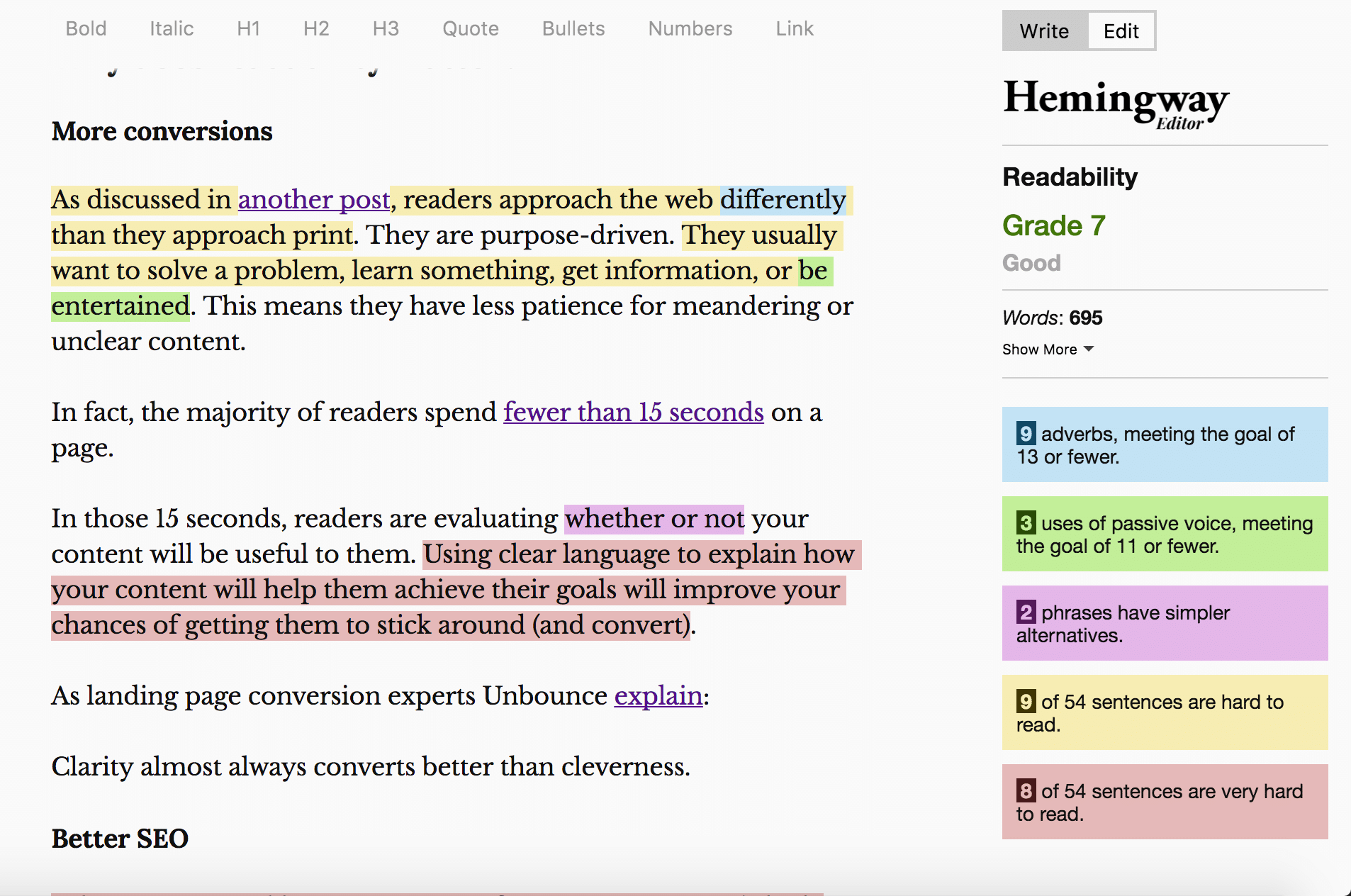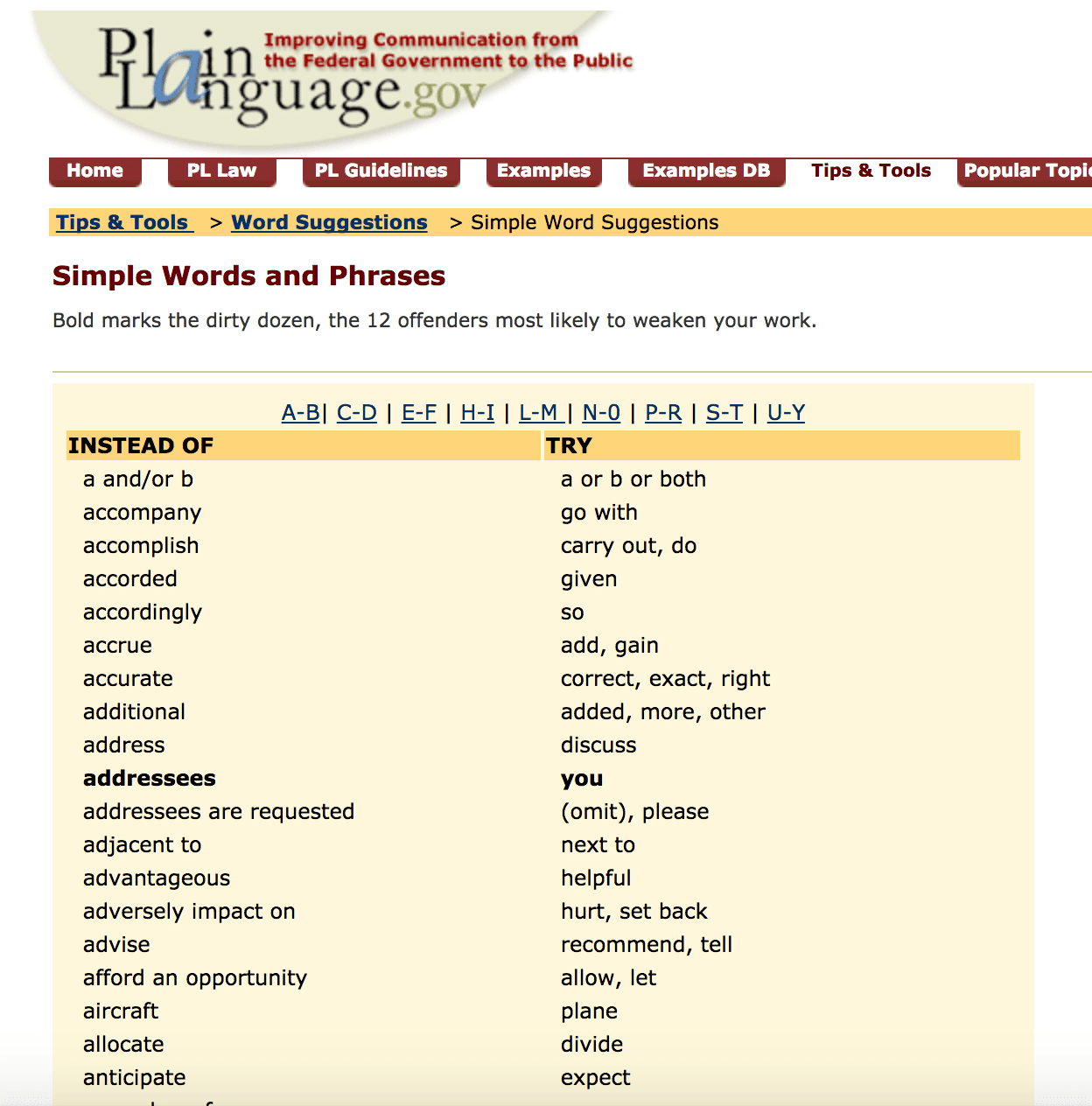“What’s the number-one thing people do on the Web? They read. Words and numbers are the raw material from which the vast majority of webpages are built. If reading is the primary activity on the Web, then readability is a primary function of Web design.” — Gerry McGovern, author of Killer Web Content
What is readability?
Whether you’re in charge of all the content on your website or in charge of writing one blog post, chances are you’re going to come across the term “readability”. Maybe your boss has asked you to make sure your post is “readable”. Or you heard that “readability” improves your SEO rating.
But, maybe, you have no idea what that means, beyond a general sense that your content should be “easy to read”.
If you guessed the above definition, you would be correct, at least partially.
In the context of web writing and content creation, readability refers to how easy it is for users to comprehend and engage with your message.
A readability score is a computer-calculated rating that determines how readable your content is based on many factors, including:
- sentence structure
- vocabulary
- number of adverbs
- instances of passive voice
- length of paragraphs
- grammar
These are just a few of the criteria by which your content can be objectively deemed “readable”, i.e. clear and concise.
Readability tools usually present scores in grade levels. A score of 6 corresponds to a grade 6 reading level. A score of 7 corresponds to a grade 7 reading level, and so on. Though your requirements may change according to your audience, a score of 6 to 8 is generally considered “readable” on the web.
Why does readability matter?
More conversions
As discussed in another post, readers approach the web differently than they approach print. They are purpose-driven. They usually want to solve a problem, learn something, get information, or be entertained. This means they have less patience for meandering or unclear content.
In fact, the majority of readers spend fewer than 15 seconds on a page.
In those 15 seconds, readers are evaluating whether or not your content will be useful to them. Using clear language to explain how your content will help them achieve their goals will improve your chances of getting them to stick around (and convert).
As landing page conversion experts Unbounce explain: “Clarity almost always converts better than cleverness.”
Better SEO
When users spend longer amounts of time on your page (which they are more likely to do if your content is clear), that sends a message to search engines that your content is high-quality. This is good for your SEO and page ranking.
Accessibility
If you are trying to create or maintain a website that is more accessible to users with disabilities, your content’s readability is a key factor. According to accessibility best practices, accessible content should be clear and concise (a.k.a readable).
However….
Readability doesn’t mean sacrificing style
A common misconception is that readable content is boring.
That’s not true at all!
As outlined in this brilliant post by Copyblogger, there are plenty of ways to connect with your audience through your writing while still following the principles of readability.
3 content readability tools
Luckily there are plenty of tools of out there to help you edit your content for readability when the time comes.
The Hemingway Editor
This is the most popular readability score test on the web. It’s named after Ernest Hemingway, a writer famous for his short, declarative sentences and concise language. He once wrote a short story that was six words long.
If you are composing content in your WordPress CMS, the Yoast SEO plugin automatically provides you with a readability score and suggestions for improvement. Follow its suggestions to get a green light!

Professional web writers turn to this list of simple words and phrases provided by PlainLanguage.gov. It is an indispensable tool for anytime you’re tempted to use flowery language, or when you’re working with complex subject matter.
Yoast SEO
If you are composing content in your WordPress CMS, the Yoast SEO plugin automatically provides you with a readability score and suggestions for improvement. Follow its suggestions to get a green light!

Simple Words & Phrases
Professional web writers turn to this list of simple words and phrases provided by PlainLanguage.gov. It is an indispensable tool for anytime you’re tempted to use flowery language, or when you’re working with complex subject matter.
Simply find the long word you want to use in your copy in the left-hand column. Then, replace it with the short word suggested in the right hand column.

What’s next after readability?
Readability is just one piece of the online content creation puzzle. Check out our tips on writing meta descriptions and copywriting for better SEO.



